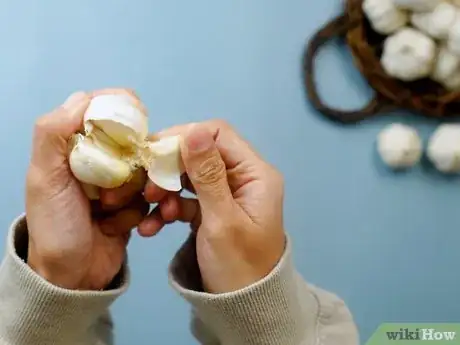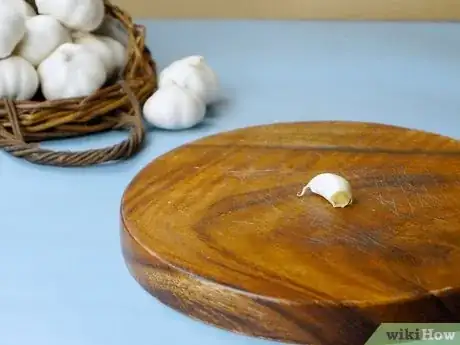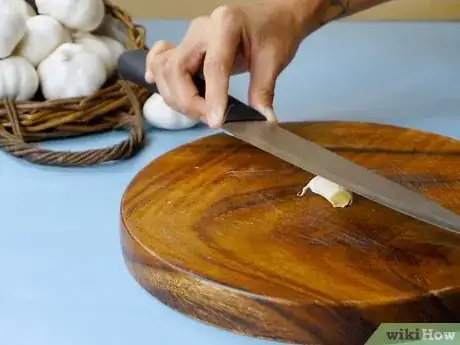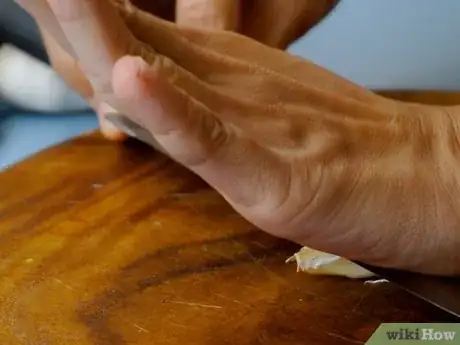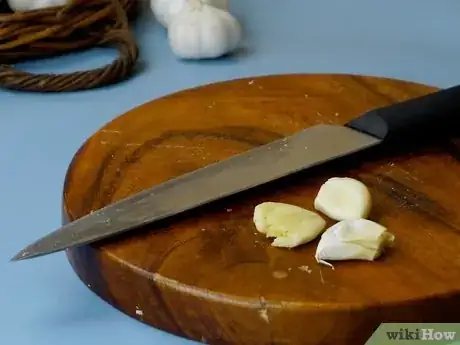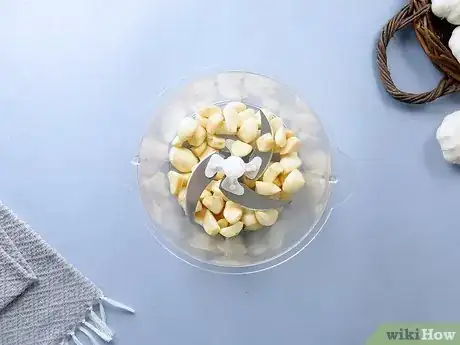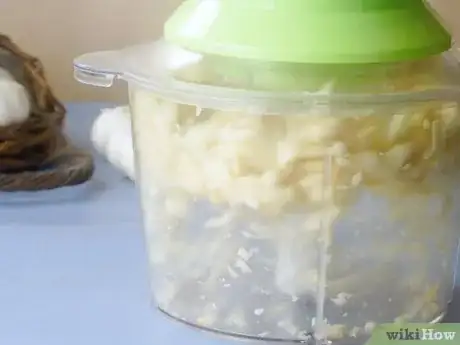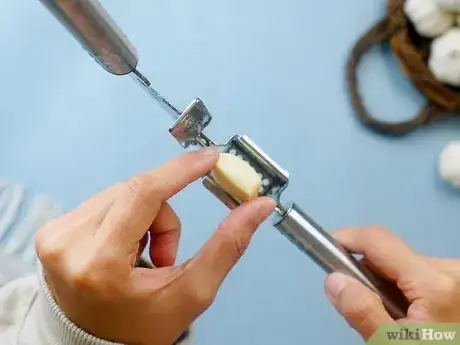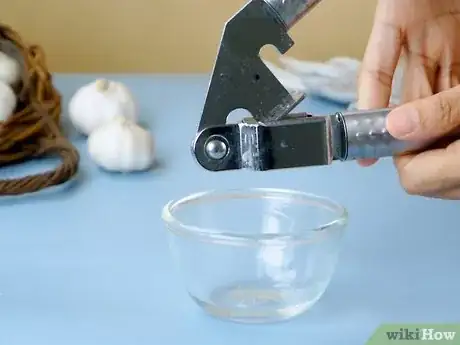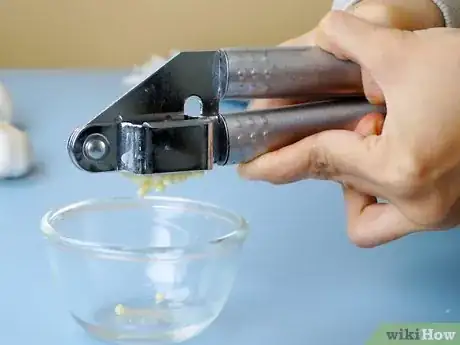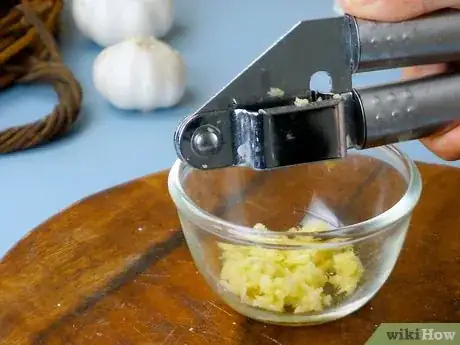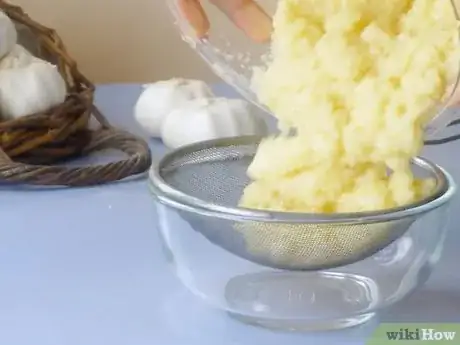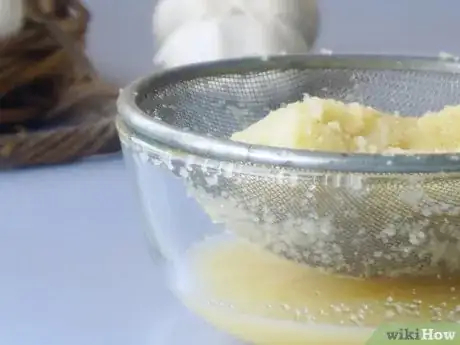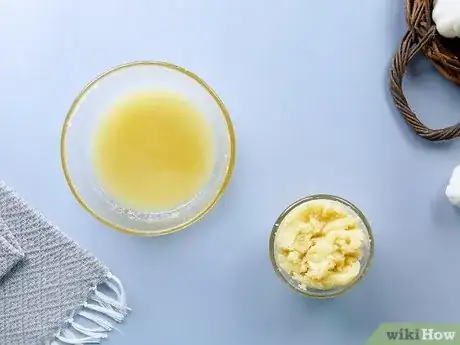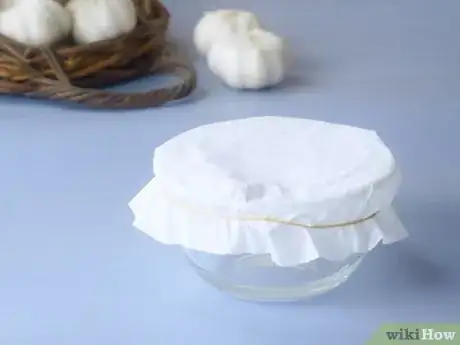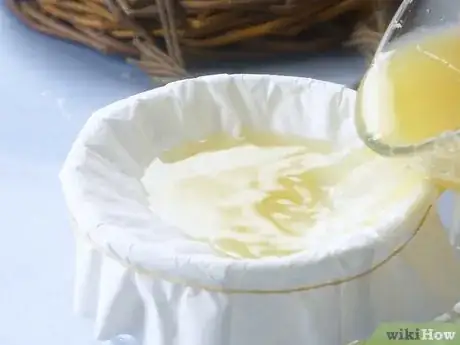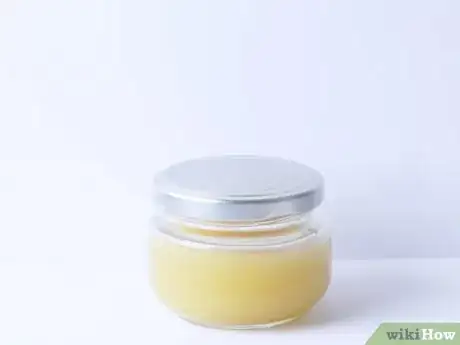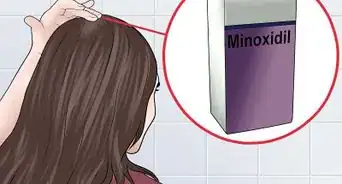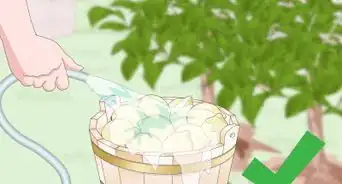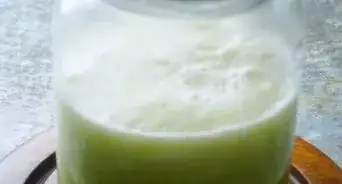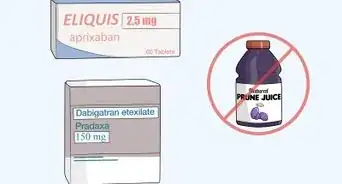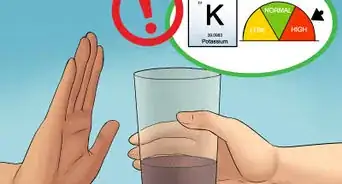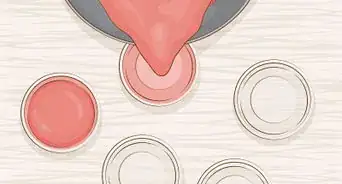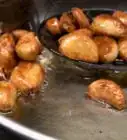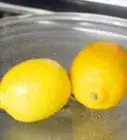wikiHow is a “wiki,” similar to Wikipedia, which means that many of our articles are co-written by multiple authors. To create this article, 10 people, some anonymous, worked to edit and improve it over time.
The wikiHow Culinary Team also followed the article's instructions and verified that they work.
This article has been viewed 281,653 times.
Learn more...
Many people tout the health benefits of garlic juice. Some claim that garlic serves as an effective antibiotic that helps your immune system ward off colds, and many believe that the antioxidants in garlic can help prevent cell damage and expel toxins. Other claims include the idea that garlic can lower cholesterol, stimulate a healthy appetite, and reduce the severity of asthma. While many of these claims do not have enough scientific research to officially support them, garlic juice does appear to have a link to improved health.
Ingredients
- 1 head of garlic
Makes 1/4 to 1/3 cup (60 to 83 ml) juice
Steps
Peeling the Garlic
-
1Pick the cloves from your head or bulb of garlic. The number of cloves your head has will vary depending on the size and variety of garlic, but a medium-sized head will usually produce around 10 cloves.[1]
-
2Lay one clove on top of a cutting board or counter. The flat side, which was closest to the "heart" or center of the head, should face down, and the curved side should face up.Advertisement
-
3Place the broad, flat side of a large chef's knife directly over the clove. Keep the clove of garlic in between the center of the blade and the handle, with the handle slightly closer than the center of the blade. The sharp cutting edge should face outward.
-
4Hold the handle of the knife with one hand and quickly strike the flat side of the blade with your other. Don't be afraid of striking the clove too hard. You should strike with enough force to smash the clove, removing the skin in the process. Be careful to avoid cutting yourself on the knife, however.[2]
-
5Repeat the smashing procedure with the remaining cloves of garlic. Strike the garlic cloves with the flat side of your knife until each one is peeled.
Using a Food Processor
-
1Place the peeled garlic cloves into a food processor. A chopper or blender will also work, but a food processor may be easiest to work with for this amount of garlic.
-
2Puree the cloves using a medium to high speed. Continue to puree them until you are left with a thick, creamy liquid. You should see few, if any, distinct "chunks" of garlic.
Using a Garlic Press
-
1Place one clove of garlic into a garlic press. If you have a large enough press, you might be able to fit multiple cloves in at once. The force it takes to crush more cloves will be greater than the strength you will need to crush a single clove, however.
-
2Hold the press over a glass bowl. Use a bowl with a large enough opening to catch the garlic that falls out of the press.
-
3Using both hands, press the handles of the garlic together. Bring the handles together as firmly and tightly as possible. You should be left with garlic "mush" inside the bowl.[3]
-
4Repeat the pressing procedure for the remaining cloves of garlic. If you sense yourself getting tired, you may want to consider taking a break. Otherwise, you could end up with garlic mush that is not as well-pressed as it should be.[4]
Straining the Juice
-
1Transfer the garlic puree or mush into a strainer. Use a strainer with small to medium-sized gaps. Fine gaps will allow you to separate as much of the solid from the liquid as possible, but they may make the process go slower. Medium gaps offer a nice balance between speed and quality.
-
2Position the strainer over a bowl. The bowl should have a wide enough opening to catch any liquid that falls from the strainer. If possible, select a bowl that the strainer can rest on in order to free up both hands.
-
3Press down on the garlic with a rubber spatula. You should see juice running through the strainer and into the bowl. Keep pressing until you are unable to produce any more juice.
-
4Discard the pulp or save it for future recipes. Garlic pulp can be used to flavor stews, soups, stir-frys, and a number of other recipes.
-
5Position a coffee filter over a glass bowl. The filter should be secured with a rubber band so that it rests loosely over the bowl, but will not fall inside. Running the juice through a coffee filter will create an even purer product. You can also use your coffee maker, but be aware of the fact that garlic has a potent odor that may linger even after you clean your machine. As a result, any coffee you prepare in the machine afterward may have a hint of garlic flavor.
-
6Slowly pour the garlic juice through the coffee filter. If you pour too quickly, you may spill some. Continue pouring until all of the juice is strained into the bowl.
-
7Store the juice in the refrigerator until you are ready to use it. Keep it in a glass bowl to prevent the odor from contaminating other foods, as well as to prevent any other flavors from contaminating the garlic juice.
Community Q&A
-
QuestionHow many garlic cloves are needed for a cup of garlic juice?
 Community AnswerOne clove of garlic produces roughly 1 teaspoon of juice. There are 48 teaspoons in a cup. So one cup of garlic juice equals 48 cloves of garlic. Obviously this is a generality, but it is very close. Once you press your first clove and measure the amount of juice you get, you can adjust the formula accordingly.
Community AnswerOne clove of garlic produces roughly 1 teaspoon of juice. There are 48 teaspoons in a cup. So one cup of garlic juice equals 48 cloves of garlic. Obviously this is a generality, but it is very close. Once you press your first clove and measure the amount of juice you get, you can adjust the formula accordingly. -
QuestionIf I mix 5% garlic, 5% ginger juice, and 10% raw honey with 80% Apple Cider Vinegar, do I need to keep it in the refrigerator?
 Community AnswerI am just preparing to make this health drink myself and it definitely says keep in refrigerator.
Community AnswerI am just preparing to make this health drink myself and it definitely says keep in refrigerator. -
QuestionCan I make liquid garlic from garlic powder?
 Community AnswerNo. You will need to use fresh garlic.
Community AnswerNo. You will need to use fresh garlic.
wikiHow Video: How to Make Garlic Juice
Things You'll Need
- Chef's knife
- Cutting board
- Food processor or blender
- Garlic press
- Mesh strainer
- Rubber spatula
- Coffee filter
- Glass bowls
References
- ↑ https://lifehacker.com/whats-the-fastest-way-to-peel-a-bunch-of-garlic-513449892
- ↑ https://www.realsimple.com/food-recipes/cooking-tips-techniques/preparation/peel-chop-garlic
- ↑ https://www.epicurious.com/expert-advice/leave-the-peel-on-when-you-use-a-garlic-press-article
- ↑ https://www.purewow.com/food/how-to-use-a-garlic-press
- The Kitchn: How to Peel Garlic Quickly and Easily
- Steady Health: Garlic Juice Benefits
About This Article
To make garlic juice, separate a head of garlic into cloves and peel each clove. Put the cloves in a food processor, then puree them at a medium to high speed until you have a thick, creamy liquid with no obvious chunks of garlic. If you don’t have a food processor or a blender, you can also mash the cloves into paste with a garlic press. Put a fine strainer in the top of a bowl or cup and transfer the puree into the strainer. Use a rubber spatula to push the garlic paste down against the strainer and squeeze the juice out into the bowl. Throw away the remaining garlic pulp or save it to use for cooking. Place a coffee filter in the top of a second container and secure it in place with a rubber band. Then, pour the juice through the filter to remove any particles that got through the strainer. Store the juice in your refrigerator in a covered container until you’re ready to use it. To learn how to puree garlic without a food processor, scroll down!
